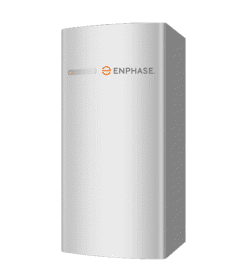As of 2021, more than 3 million solar energy systems have been installed across the United States, most of them being residential systems. With production tax credits and investment tax credits potentially getting a 10-year extension in the Build Back Better Act, which awaits passage by the Senate, homeowners have all the more reason to choose to make the switch to clean energy provided by the sun. While this is great news for our planet and the direction we must head to reduce greenhouse gas emissions, we would be remiss to ignore the elephant in the room that is our aging power grid and increasingly prevalent power outages. Solar energy is the most accessible and affordable clean energy solution available but without battery backup, grid-tied systems will stop working during grid outages. This is because solar energy systems are designed to shut off (known as anti-islanding protection) to avoid sending power to the grid and electrocuting workers who are doing their part to get the grid up and running again.
This is one of many reasons why more solar energy stewards are choosing to pair their solar energy systems with battery storage. Batteries increase energy independence and serve as backup power at times when it is needed most, like in the evenings after getting home from work, at night, or during a power outage.
In this blog, we will be taking a look at two of Positive Energy Solar’s battery offerings: the Tesla Powerwall 2 and the Enphase Encharge battery.


Tesla Powerwall 2 vs Enphase Encharge Battery At a Glance
Let’s take a look at how they compare.
|
Tesla Powerwall 2 |
Enphase Encharge 10 |
|
|
System compatibility |
Pairs with all system types |
Pairs best with systems that have Enphase microinverters |
|
Usable Capacity (kWh) |
13.5 |
10.1 |
|
Max cont. power (kW) |
5 |
3.84 |
|
Max peak power (kW) |
7 |
5.7 |
|
PV/ESS Coupling |
AC |
AC |
|
Inverter Size |
Max 150% of Energy Storage System kW |
Max 150% of Energy Storage System kW |
|
Cell Technology |
Lithium-Ion Nickel Manganese Cobalt |
Lithium-Ion Phosphate |
|
Integrated Monitoring w/PV |
No |
Yes |
|
All-in-one support |
No |
Yes |
|
Passive Cooling |
No |
Yes |
|
Generator Integration |
No |
Yes |
|
Safety (LFP chemistry) |
No |
Yes |
When considering your best battery storage option, here are a few things to consider and speak with your solar advisor about:
Are you adding a battery to your existing solar energy system as a retrofit or are you installing solar panels and batteries together?
The Tesla Powerwall 2 is built with its own integrated AC-coupled battery inverter which makes it solar inverter agnostic and gives it the capability to work with a wider range of existing solar panel systems; whether you have a string inverter (SolarEdge, SMA, Fronius, etc.) or microinverters from Enphase.
Of course, if your existing solar panel system is already using Enphase microinverters, the Enphase Encharge Battery may also allow you to retrofit. Currently, the Enphase Encharge battery works with the following microinverters: M215, M250, IQ6, IQ7. Many customers enjoy the benefit of having a single manufacturer and system that communicates and works together.
How much energy storage does your home need?
Your advisor will help you determine exactly how many solar batteries you’ll need for your home, but you’ll want to determine how and when you might use your energy storage. For example, are you looking for an emergency backup-power solution that ensures a few critical items have power (e.g. refrigerator and lights) or a more robust option that can power your entire home (e.g. A/C or heating, deep freezer, electric vehicle, washing machine) autonomously for sustained periods during an outage? Maybe you're looking to stretch energy collected from the sun during the day into the evening and night so you can utilize more of the clean energy your solar system produces while reducing dependence on the grid. Whatever your goal may be, getting the proper amount of storage to meet your needs is crucial.
Tesla Powerwall 2 comes in a single-size option with a total usable energy capacity of 13.5 kWh. Additional Powerwalls can be added for more capacity, each at an additional 13.5 kWh of storage.
Enphase Encharge Batteries come in two sizes: Enphase Encharge 3 (with a total usable energy capacity of 3.36 kWh) and the Enphase Encharge 10 (with a usable energy capacity of 10.1 kWh). This modular design allows for right-sizing a solar battery solution without getting more than you need.
What is your budget and timeframe for solar & storage?
Tesla Powerwall 2 is still the cheapest $/kWh of storage available. The high demand for Tesla batteries, combined with fulfillment issues from the manufacturer, means lead times currently of 9-12 months. As previously mentioned, because of the single storage capacity sizing, you may have to add more batteries than required, and that cost can add up. If you don’t mind the wait, this could be a great home battery option for you.
Enphase Encharge Batteries are currently available without additional lead times meaning you can have your solar and batteries up and running quickly. While Enphase batteries typically cost slightly more than Tesla, the ability to right-size a system has the potential to provide a great value without paying for more than you need.
As you can see, both batteries offer great value and energy storage solutions. Got more questions about battery storage options? Contact Positive Energy Solar today to discuss your options for solar + energy storage and let us help you find the right fit.

